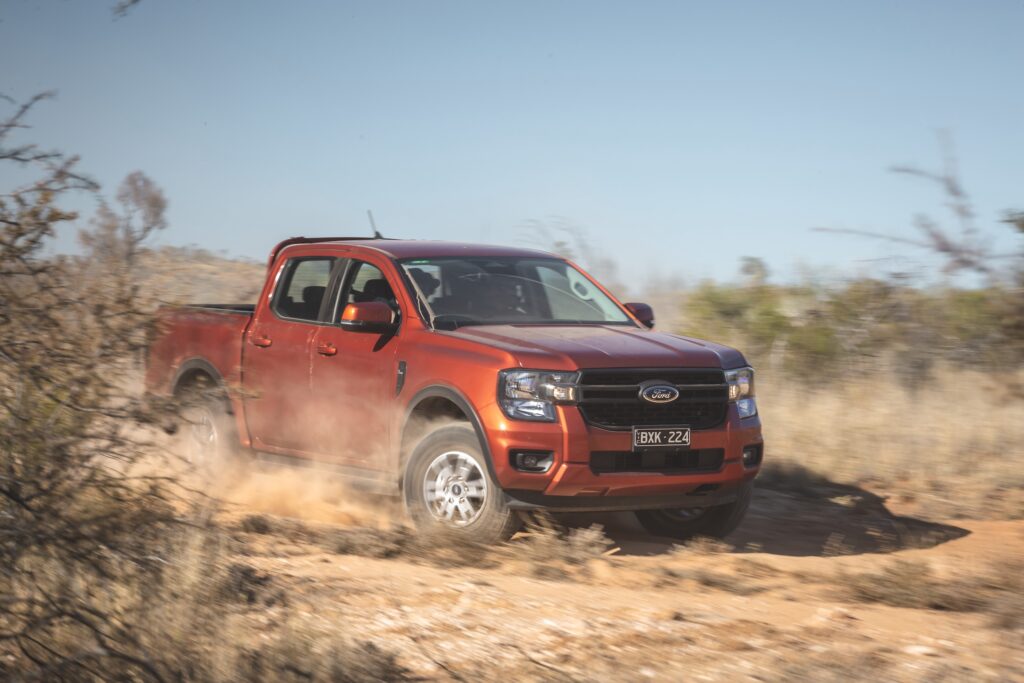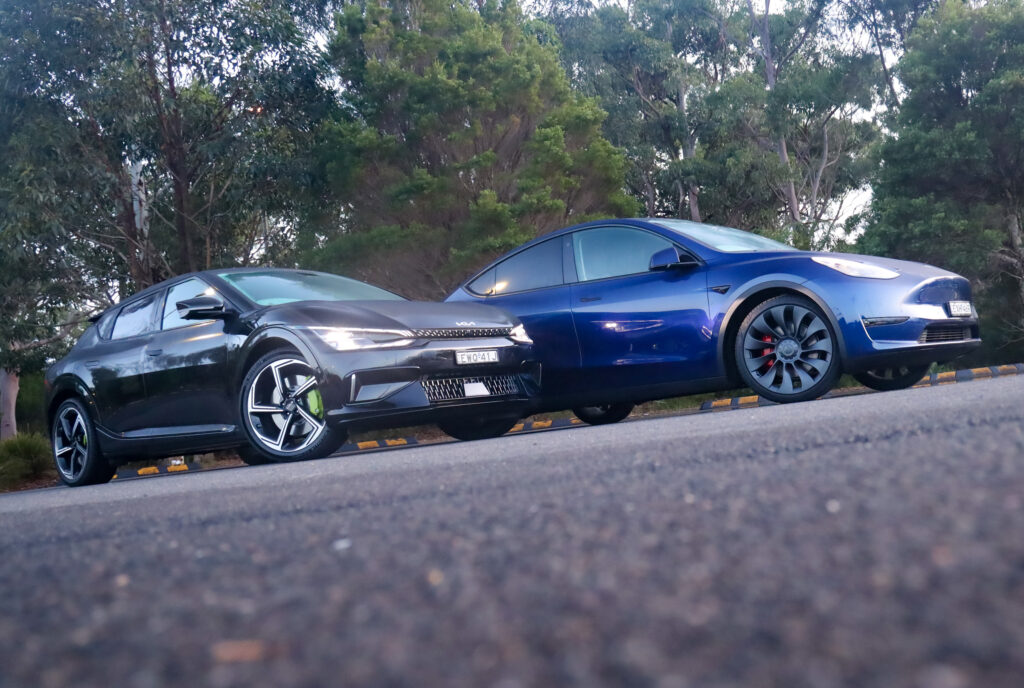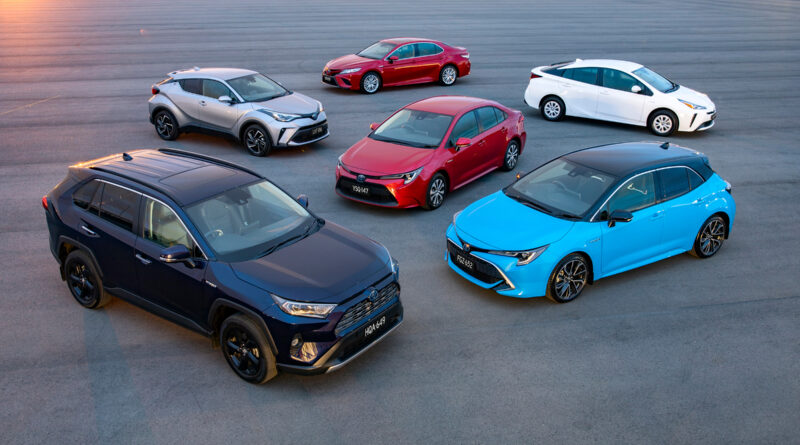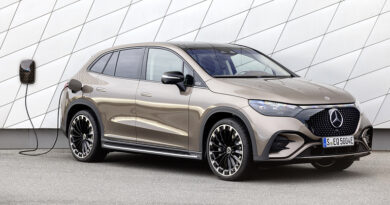Australians are buying bigger cars, but they’re getting cleaner – and hybrids and EVs are rushing to the CO2 rescue
Australians are buying larger cars but they’re using less fuel and emitting less CO2 than cars from two decades ago.
But the shift towards heavier, thirstier vehicles is being offset by an increase in the number of EVs on our roads.
They’re some of the findings from the comprehensive report by the National Transport Commission, titled “Light vehicle emissions intensity in Australia: trends over time”.
READ MORE: Toyota a winner as CO2 reduction plan introduced to parliament with less pressure on SUVs and utes
READ MORE: It’s a green light for electric vehicles! Aussie CO2 standard tough on Toyota, SUVs and utes
READ MORE: CO2 standards need to match Europe, US and should be linked to EV incentives: EV Council
The 145-page report released this morning looks at light vehicle emissions in Australia in 2003 and compares them with emissions from 2023, as well as vehicle emissions in other parts of the world.
The report not only factors in new vehicles but also used cars, taking in all light vehicles registered since 2003. All up almost 17 million light vehicles (the report excludes trucks, buses and other heavy vehicles) were analysed.
Despite the trend to bigger vehicles, CEO and commissioner of the National Transport Commission, Michael Hopkins, said there was evidence demonstrating that efforts to lower fuel use were having an impact.
“There is good news: the emissions intensity for new vehicles sold in 2023 was down by 5 per cent compared to 2022, marking the largest percentage drop since reporting began in 2009.”
Here are some key take-outs from the 2023 NTC light vehicle emissions report.
Cars are getting bigger
The rise of utes and the boom in SUVs means Aussies are driving bigger vehicles.
That’s perhaps no surprise to anyone who’s joined the school rush or battled ute-heavy beach carparks all over the country.
The NTC report highlights that sales of small cars have dropped from 24 per cent of the market in 2023 to just 7 per cent in 2023.
Instead of Toyota Corollas and Mazda3s, Australians are increasingly turning to SUVs, many of them mid-sizers that are a lot bigger than they ever were.
The NTC says the average vehicle footprint – how much space it takes up on the road – has grown by 5.9 per cent, from 8.29 cubic metres to 8.78 cubic metres.
The growth in utes has been even more dramatic, in part because Aussies have shifted from car-based utes such as the Falcon and Commodore to truck-like dual-cabs headlined by the Ford Ranger and Toyota Hilux.
The rise of American pick-up trucks – which account for about four per cent of ute sales – hasn’t helped either.

The NTC says the average ute footprint has grown 17.3 per cent, from 8.69 cubic metres to 10.19 cubic metres.
Cars are emitting less CO2
The NTC light vehicle emissions report says average vehicle emissions in 2023 dropped by five per cent, the most of any year over the past two decades.
It nominates the increased uptake of EVs and hybrids as the reason for the decrease.
By January 2024 the report says there were 435,887 hybrids registered in Australia and more than 150,000 battery electric vehicles.
Hopkins says the increased uptake of hybrids “made a material difference to emissions reductions this year”.
While Hopkins says Australia is making progress he points out that “our national average still lags most developed countries”.
Countering the electrified decrease in vehicle emissions is an appetite for more expensive vehicles, which is having a negative impact on CO2 emissions, according to the NTC report.
The report highlights that “generally, the more expensive the car, the higher its emission”.
Older cars, too – especially locally-made Fords and Holdens – haven’t helped the CO2 average.
The NTC says Falcons and Commodores have “a high average emissions intensity of around 260g/km”.
The report highlights that more than three-quarters of registered light vehicles – 77 per cent – have average CO2 emissions above 250g/km.
It means that the fleet average of nearly 17 million vehicles had average CO2 emissions of 193.7g/km, which is well up on the 165.2g/km for all vehicles sold in 2023.
“Nearly all the vehicles (93 per cent) with an emissions intensity of less than and up to 120g/km entered the fleet in the years since 2014,” said Hopkins.

However, one thing the report didn’t take into account was how many kilometres each car drove.
We’d guess an average ute would drive further each year than an average city hatchback.
But for the purposes of this report it looked at only the average CO2 emissions each car emits over one kilometre.
Australia is off the pace
Unsurprisingly, Australia’s love of larger vehicles – many of them powered by more powerful engines – means we lag the best in the world, headed by Europe.
Of 29 European countries the average light vehicle – not including utesd and vans – emitted 107 grams of CO2 per kilometre, whereas the average in Australia was 150g/km.
The report says light vehicle emissions are higher than those in the US and Canada.




